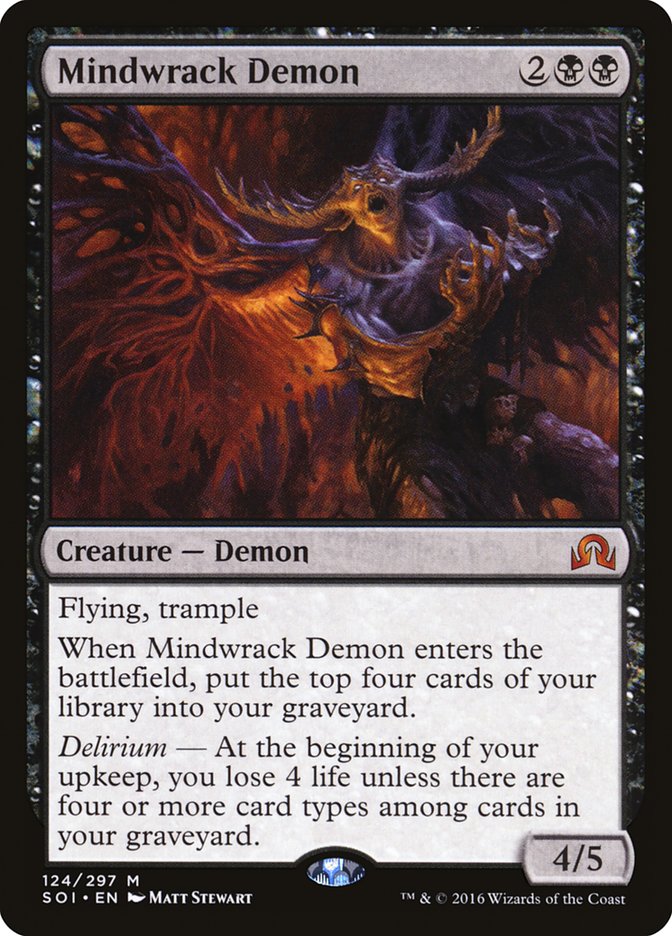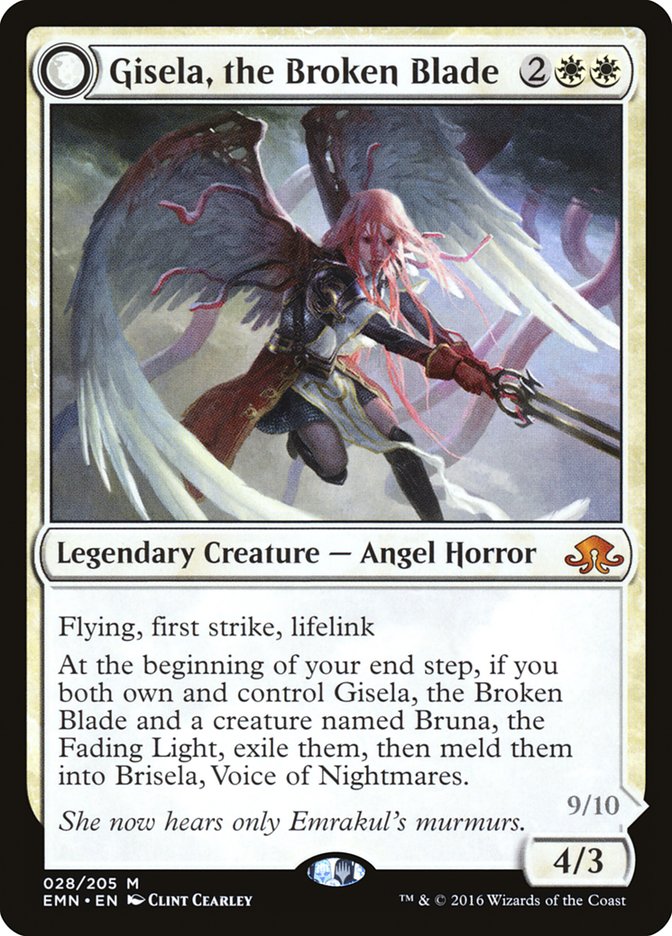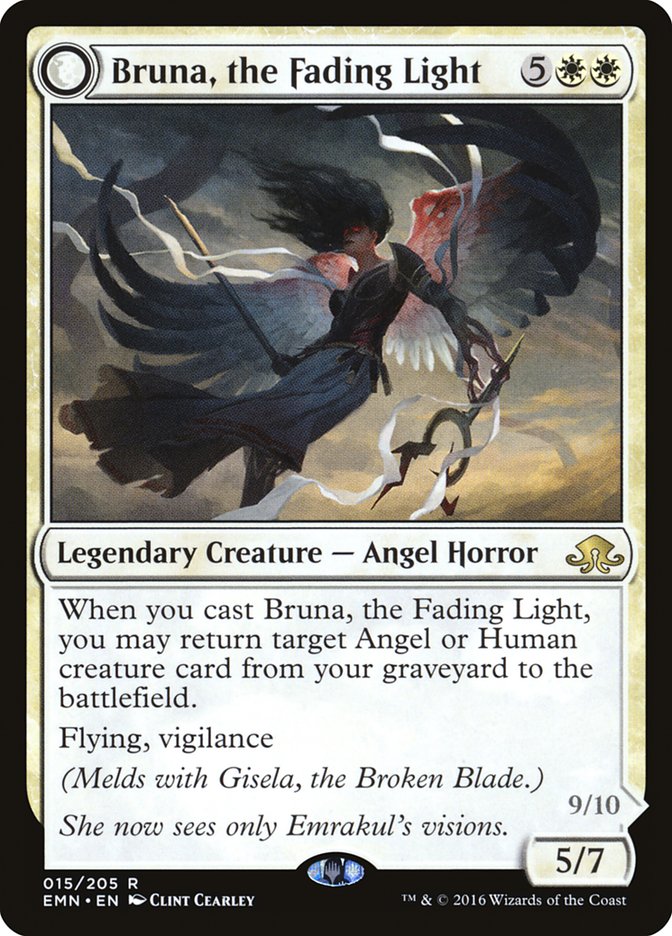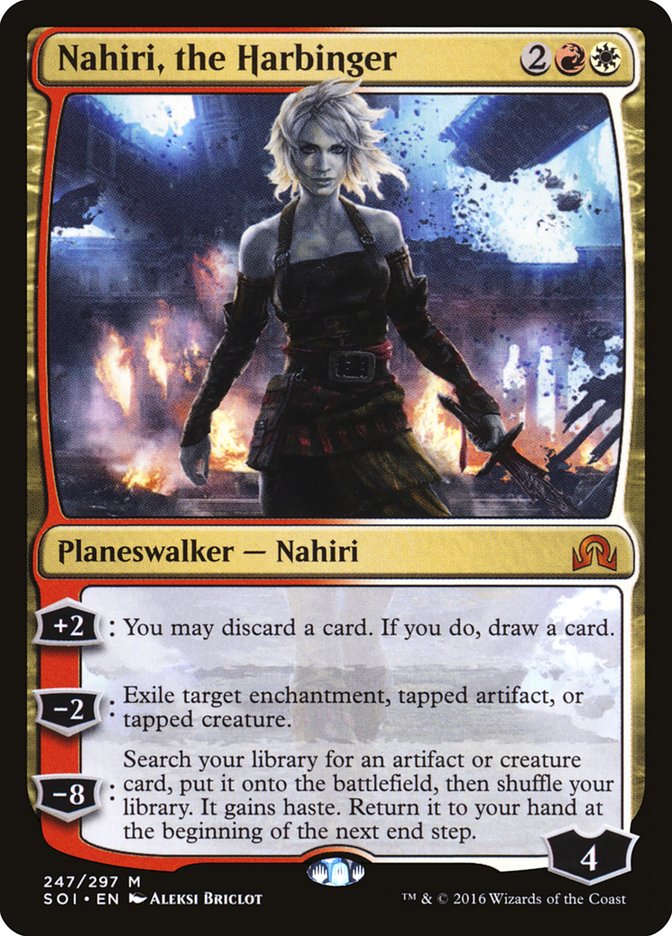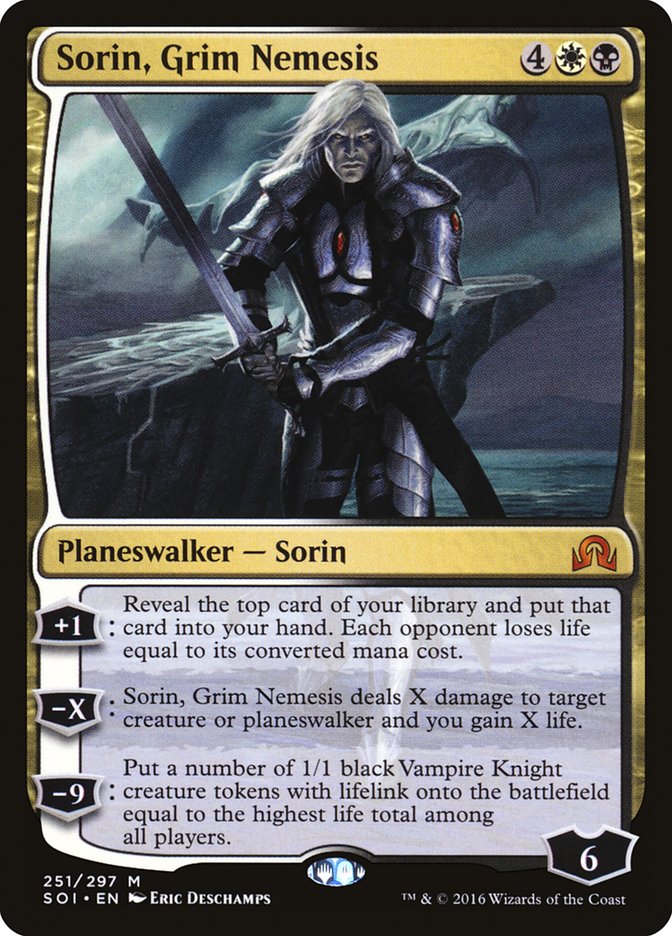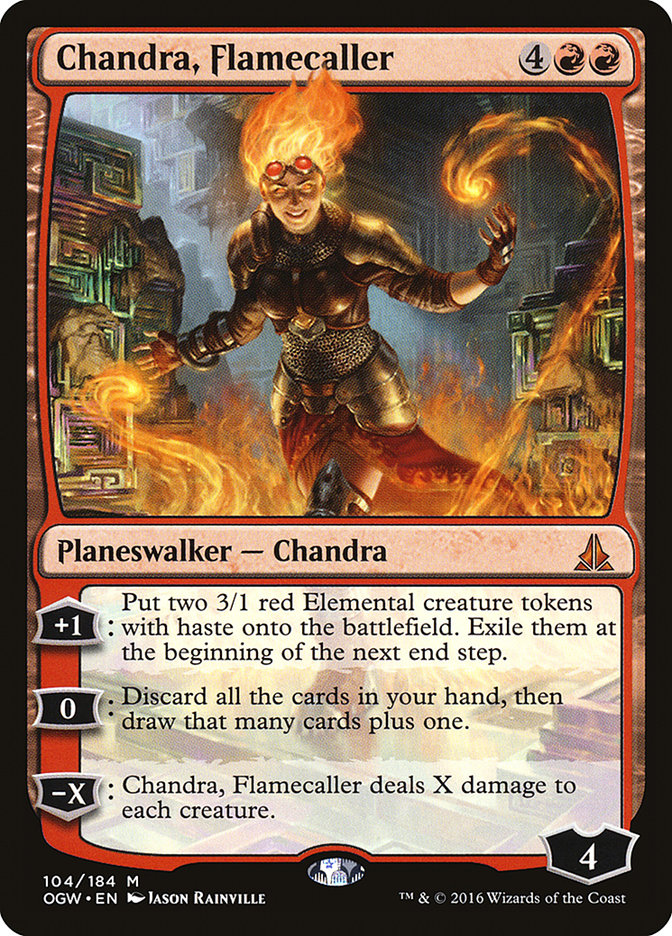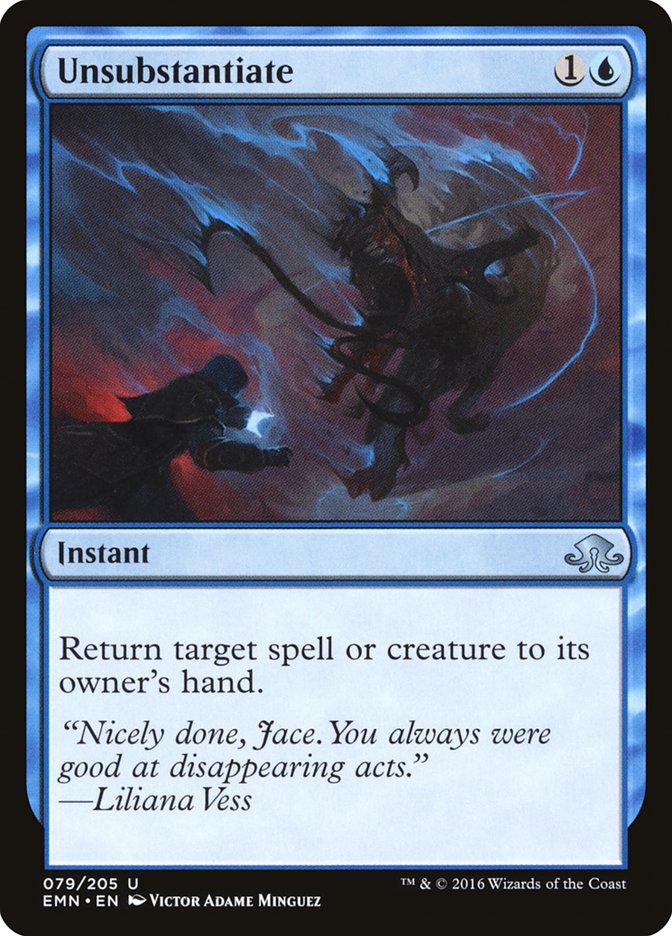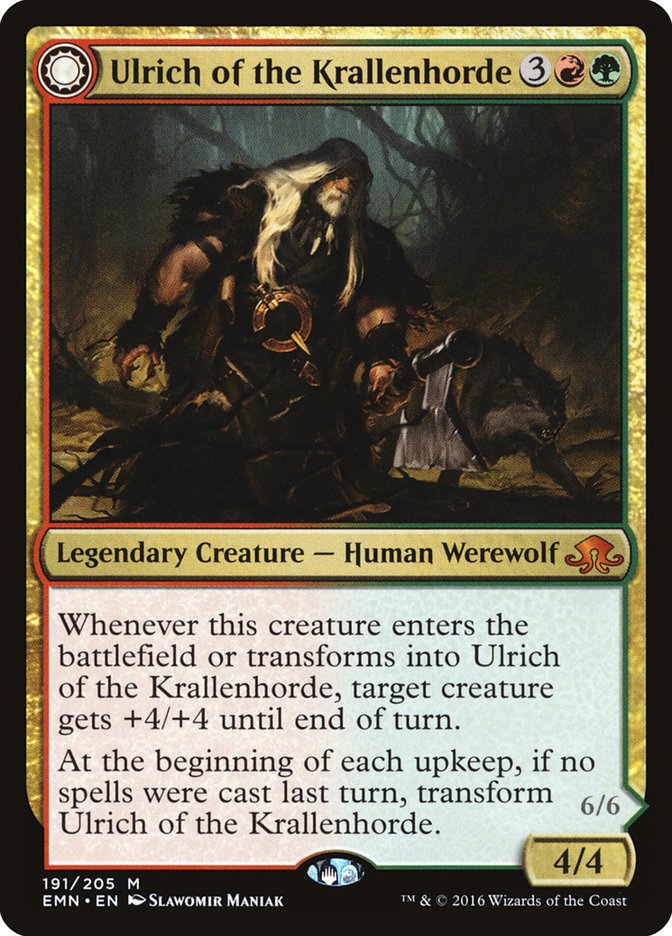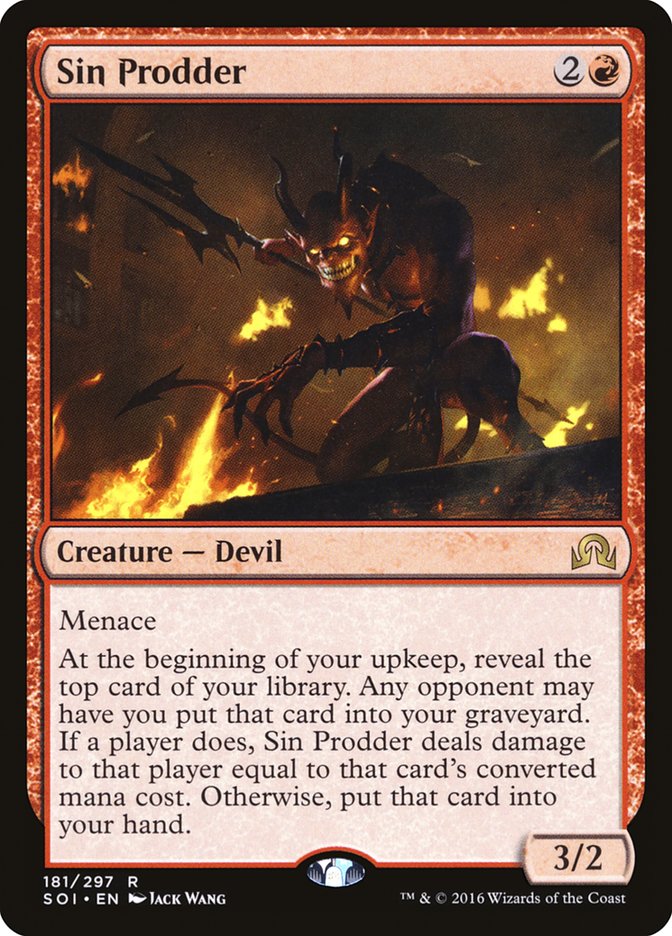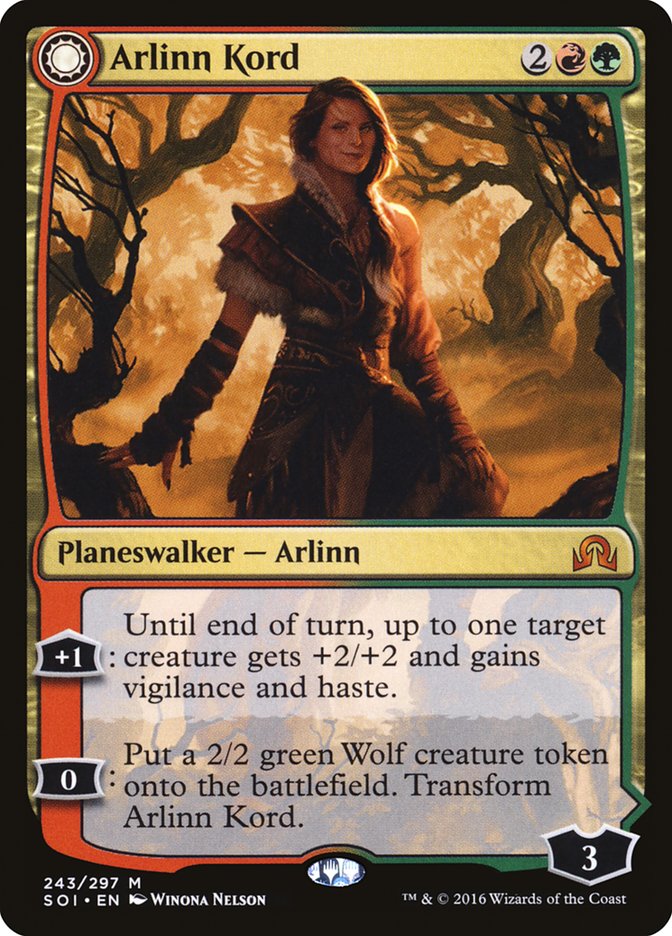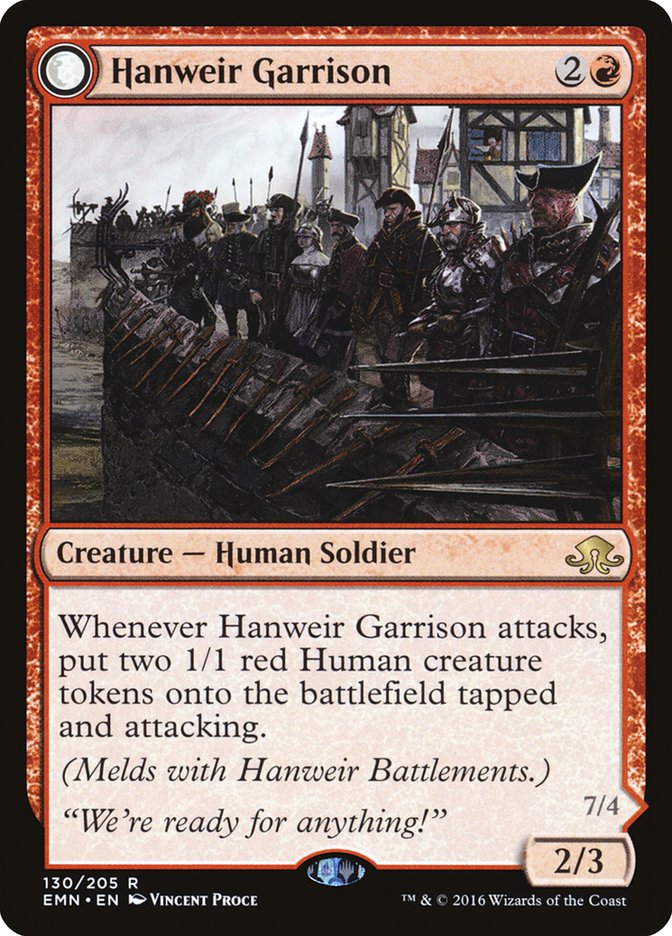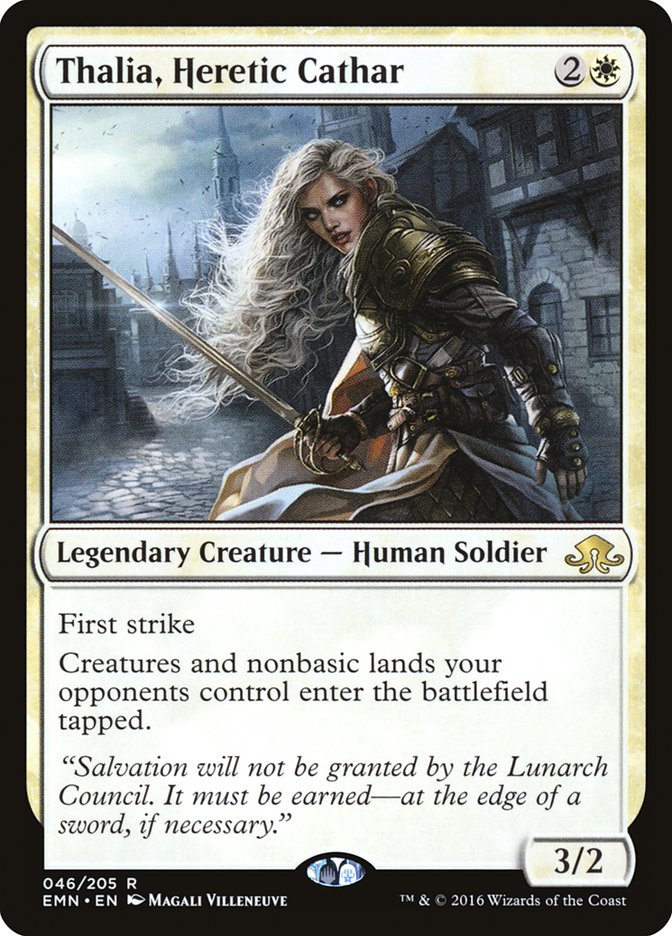#SCGDFW is in the books, and I played Naya Company to a disappointing 5-3 finish. I could have won two of the matches I lost with more focused play, but I’m not one to dwell on the past, so let’s take a look to the future.
Eldritch Moon spoilers have started to come out, and it turns out Emrakul, the Promised End was the cause of the madness on Innistrad. I could also see Emrakul being the cause of madness in plenty of Standard matches over the next year, so let’s take a look at how we can use her.
Casting Emrakul, the Promised End allows us to take our opponent’s next turn at the very small cost of giving them an extra draw step. When taking our opponent’s turn, we can use their removal spells on their own creatures or have them attack into our 13/13 flyer, leaving them as hopeless and mad as the citizens of Innistrad.
Creatures (19)
- 2 Den Protector
- 1 Nissa, Vastwood Seer
- 4 Hangarback Walker
- 4 Sylvan Advocate
- 4 Mindwrack Demon
- 4 Emrakul, the Promised End
Planeswalkers (2)
Lands (25)
Spells (14)

The goal of this deck is to fill our own graveyard with as many different card types as possible to reduce Emrakul, the Promised End’s casting cost. This deck interacts with the battlefield while reducing the cost of Emrakul, unlike a traditional ramp strategy. There are seven different card types in the deck, which could give us the ability to cast Emrakul for as little as six mana. Mindwrack Demon, Vessel of Nascency, and Gather the Pack are all used to fill our own graveyard, while the two latter cards pair up with Traverse the Ulvenwald to help find the Promised End.
Mindwrack Demon in particular is a card I’m very excited about heading into Eldritch Moon Standard. The 4/5 flying body matches up very well in a format full of Grasp of Darkness, Languish, Archangel Avacyn, and now Gisela, the Broken Blade. Also, putting cards in your own graveyard can have a huge upside when paired with Emrakul, the Promised End or Bruna, the Fading Light.
Let’s see what a deck featuring Mindwrack Demon and the two Eldrazi-infested Angels could look like.
Creatures (15)
- 1 Dragonlord Kolaghan
- 4 Hangarback Walker
- 1 Linvala, the Preserver
- 3 Mindwrack Demon
- 2 Emrakul, the Promised End
- 1 Bruna, the Fading Light
- 3 Gisela, the Broken Blade
Planeswalkers (5)
Lands (26)
Spells (14)

This deck is built around using Ever After to bring two creatures from our graveyard onto the battlefield. Casting Ever After targeting Dragonlord Kolaghan and Emrakul, the Promised End will net you nineteen power of flying haste creatures. Targeting Gisela, the Broken Blade and Bruna, the Fading Light will allow them to meld together to form Brisela, Voice of Nightmares.
Nahiri, the Harbinger does double work in the deck. Her plus ability allows you to put your large creatures in your graveyard while searching for Ever After. Her ultimate ability can either grab an Emrakul or one of the two Eldritch Moon Angels. If you have a Gisela, the Broken Blade on the battlefield when you ultimate Nahiri, searching for Bruna, the Fading Light, Bruna and Gisela will exile at end step before melding together, which allows them to stay on the battlefield and not return to your hand. Chandra, Flamecaller allows you do discard your whole hand in search of your Ever Afters.
Mortuary Mire has some interesting applications in the deck as well. If you have both Bruna and Gisela in your graveyard, the Mire can place Bruna on top of your library, so that the next turn, you would be able to cast Bruna, return Gisela to the battlefield, and meld Brisela. If you have Nahiri or Sorin, Grim Nemesis on the battlefield, you can draw the Bruna from the top of your library and not have to wait until your next turn. Also, if you have a Sorin on the battlefield and use a Mortuary Mire to place Emrakul on top of your deck, you can have your opponent lose thirteen life out of nowhere.
Creatures (18)
- 4 Jace, Vryn's Prodigy
- 1 Linvala, the Preserver
- 4 Reflector Mage
- 3 Archangel Avacyn
- 3 Bruna, the Fading Light
- 3 Gisela, the Broken Blade
Lands (26)
Spells (16)

This deck is looking to maximizing the cast trigger on Bruna, the Fading Light. Every creature in the deck can be returned to the battlefield by Bruna. Nagging Thoughts can be used to either find Bruna or hit your land drops while placing a creature in your graveyard. Nagging Thoughts also synergizes well with Jace, Vryn’s Prodigy, as it can be cast off the discard trigger for its madness cost or from the graveyard after Jace has transformed. Jace, Vryn’s Prodigy can also be used to place your various Angels in your graveyard in order to find Bruna, the Fading Light or the land drops needed to cast her.
Part Remand, part Unsummon, Unsubstantiate is a new instant that will help blue aggressive decks get ahead and stay ahead. I wouldn’t use the card in a control strategy, but here it works well with Reflector Mage and Jace, Vryn’s Prodigy to keep your opponent off-balance enough to allow your Angels to take over.
Creatures (22)
- 4 Thunderbreak Regent
- 2 Surrak, the Hunt Caller
- 4 Sylvan Advocate
- 3 Sin Prodder
- 1 Ulvenwald Hydra
- 3 Lambholt Pacifist
- 3 Duskwatch Recruiter
- 2 Ulrich of the Krallenhorde
Planeswalkers (2)
Lands (25)
Spells (7)

Add four copies of Hanweir Garrison to the above deck for a complete 60.
Ulrich of the Krallenhorde can turn even the smallest creature into an absolute monster when he enters the battlefield. In this G/R Aggro deck, we are using a mashup of some of the most powerful creatures in Standard that can do a ton of damage out of nowhere. Duskwatch Recruiter, Lambholt Pacifist, and Sylvan Advocate have proven themselves to be Standard staples that start off our curve.
In the three-drop slot, we have two power red rares in Hanweir Garrison and Sin Prodder. Sin Prodder in particular pairs well with Arlinn Kord and Ulrich of the Krallenhorde because of having menace. Although Hanweir Garrison doesn’t turn on Surrak, the Hunt Caller alone, the card is still powerful enough when attacking and with Hanweir Battlements to include it over other similar options such as Tireless Tracker. Duskwatch Recruiter can be used to help find Hanweir Garrison and Ulvenwald Hydra can be used to find Hanweir Battlements, which allows more ways to reliably meld Hanweir, the Writhing Township.
Arlinn Kord synergizes well with all of the creatures in the deck, especially Sin Prodder and Thunderbreak Regent, because of the evasion each creature has. Ulrich allows Arlinn Kord to make a relevant Wolf token that can be a 6/6 creature, letting her transform into Arlinn, Embraced by the Moon. Surrak, the Hunt Caller and Arlinn Kord have similar abilities and are both legenday, and having two of each allows us to play around the “legend rule.” Galvanic Bombardment is similar to Fiery Impulse, but I believe it to be better in this deck with only seven instants and zero sorceries.
Creatures (21)
- 2 Abbot of Keral Keep
- 3 Thopter Engineer
- 3 Thraben Inspector
- 4 Thalia's Lieutenant
- 4 Lambholt Pacifist
- 3 Duskwatch Recruiter
- 2 Thalia, Heretic Cathar
Lands (26)
Spells (10)

Again, add four copies of Hanweir Garrison to the deck.
Hanweir Garrison’s synergy with Thalia’s Lieutenant is so strong that I may be willing to leave my Reflector Mages at home. Naya Humans is an aggressive take on the already existing Bant Humans strategy, using Atarka’s Command to end games quickly. Thopter Engineer makes an appearance over Tireless Tracker because flying and multiple bodies are exactly what we want with Atarka’s Command.
Besides Naya Humans, I absolutely expect Hanweir Garrison to become a staple in the W/R Humans deck moving forward. The card reminds me of a smaller Hero of Bladehold that has the ability to transform into a Grave Titan. Regarding meld cards, it’s important to note that a Reflector Mage will return both cards to your hand, and an Eldrazi Displacer will return each card to the battlefield separately.
The last card I wanted to mention today is Thalia, Heretic Cathar. Being maybe the last Human not infected by Emrakul, Thalia has the power to be a Standard staple. She fits perfectly into both the existing archetypes of W/R Humans and Bant Company and will probably be a two- or three-of in each deck. I don’t believe she will be a four-of in either deck because she is legendary and has a converted mana cost of three, but expect to see plenty of your nonbasic lands and creatures entering the battlefield tapped. I’m not as convinced that Thalia is powerful enough to see play in non-rotating formats, but if she is, it will be because of her interaction with opposing fetchlands.
The SCG Tour® makes a stop in Worcester on July 9th for a Legacy Open, which will be my second Legacy Open. I’ve been busy acquiring cards over the last couple of weeks for it, and I’m excited to sleeve up Brainstorms for the first time. After that it will be the StarCityGames.com Standard Open in Columbus that will be Eldritch Moon’s debut in Standard.
Will Emrakul, the Promised End cause the same madness in Standard that she has on Innistrad? I can’t wait to sleeve her up myself and find out. Which cards from Eldritch Moon are you most excited about? Which card do you think I’m overlooking?
Comments from Last Week
Starting this week, I will be ending each one of my articles by highlighting a couple of the questions from last week’s comment section. They may be questions about the decks or cards in the article, suggestions for new cards to try, or other topics of competitive play.
Want to be featured in Comments from Last Week? Just leave a question in the comments section below. Clear, concise, one or two-part questions are preferred. And don’t forget to check back next week to see if you made the cut!
Hi Todd! I’m a big fan of the Bant Eldrazi deck, thanks for bringing this one to the community’s attention! I’ve found the Affinity matchup to be challenging though; can you offer any advice on how to sideboard, what cards you feel are most important in the matchup, etc.? Thanks in advance!
-Benjamin Janis
First off, I’m glad you are enjoying the deck. The Affinity matchup is challenging, as their speed and evasion is perfect against our deck. Against Affinity, this is how I sideboard:
In:
Out:
Stony Silence and Engineered Explosives do not work well together, but each card is individually powerful enough to bring in. I would strongly consider mulliganing a hand without Stony Silence in it. Timely Reinforcements is not great in the face of flying creatures, but the lifegain is very relevant in the race. Like against any other creature deck, Eldrazi Displacer and Drowner of Hope are your two best creatures in the matchup.
Loving the innovation in your Naya Company list, I’d like to ask you whether you’d bring in Blood Moon or not against Jund and do you prefer to side out some mana creatures, some Lightning Bolts, or utility creatures in this matchup?
-Vassilis Zagoudis
Against Jund, I usually sideboard like so:
In:
Out:
This is my most common sideboard strategy against Jund. I don’t like Blood Moon overall and usually do not bring it in. However, there are exceptions. If I am on the play against an opponent whose manabase looks especially greedy, I may bring in Blood Moon and try to get it down on turn 2. In this scenario, I would not cut the Noble Hierarchs. The risk to this strategy is that even if I am able to get a turn 2 Blood Moon, they may still Lightning Bolt my Noble Hierarch and leave me unable to cast my own spells.
Enjoy the SCG Tour® weekend off, everyone.



